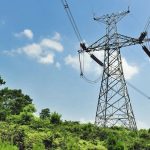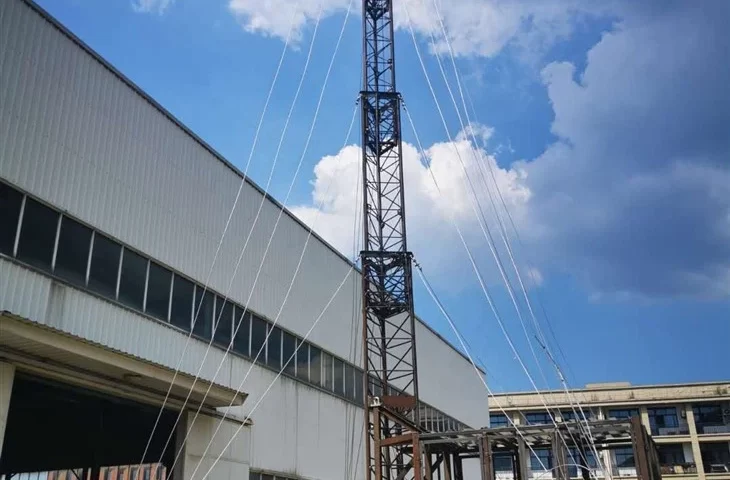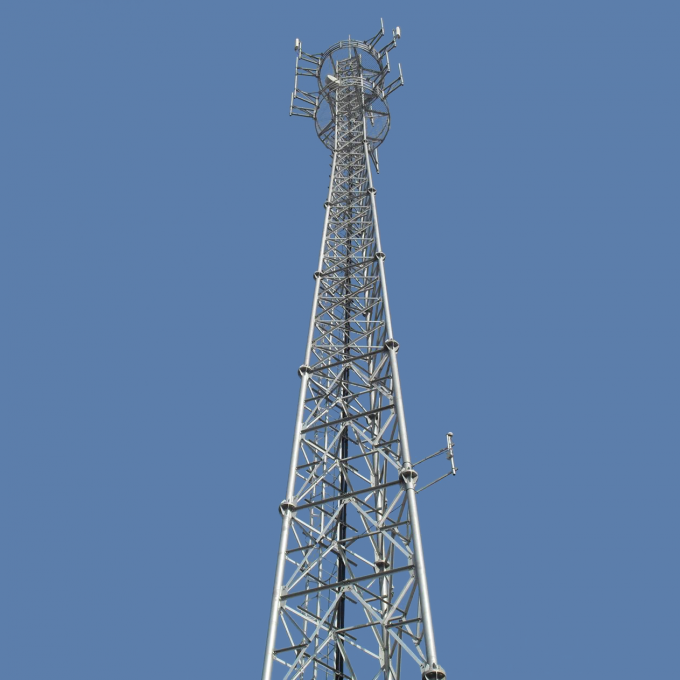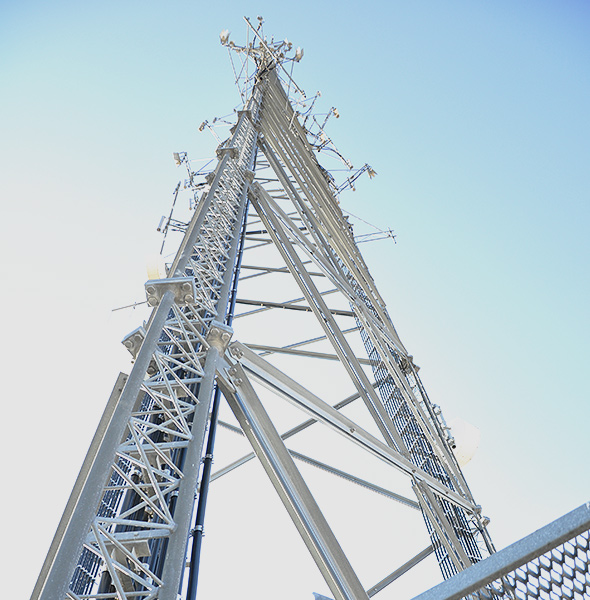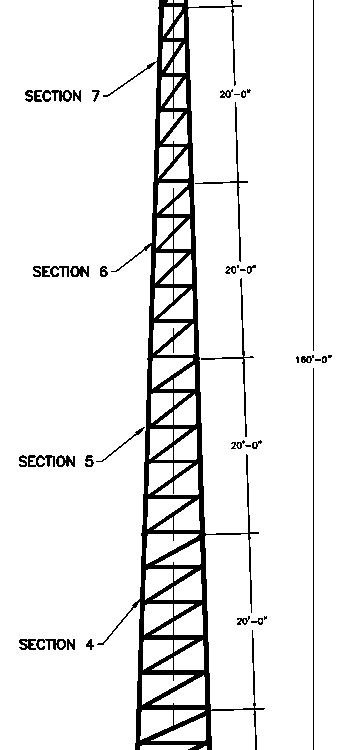Self-guying portable mobile antenna steel towers are designed to provide reliable and robust support for communication antennas in temporary or remote locations. Unlike traditional towers that rely on external guy wires for stability, self-guying towers maintain balance using their intrinsic structural design. This makes them ideal for scenarios requiring quick deployment without compromising performance.
In today’s fast-paced, connectivity-driven world, these towers play a pivotal role in enabling seamless communication during emergencies, outdoor events, or military operations. With their portability and ease of installation, they are indispensable assets in temporary communication setups.
Evolution of Mobile Antenna Steel Towers
From Fixed Structures to Portable Solutions
Initially, antenna towers were built as fixed structures, requiring significant groundwork and time for setup. While effective, these towers lacked the flexibility to cater to temporary needs.
Rise of Portability
The advent of portable solutions began in response to the growing demand for communication during emergencies and events. Innovations in engineering and materials led to the development of lightweight yet sturdy self-guying designs.
Integration of Modern Technology
Today’s self-guying portable mobile antenna towers leverage cutting-edge technology to offer improved stability, adaptability, and rapid deployment capabilities. From automated assembly to enhanced wind resistance, the evolution continues to meet the demands of modern applications.
Components of Self-Guying Mobile Antenna Towers
Understanding the key components of these towers highlights their functionality:
- Steel Framework: Made from high-grade steel, ensuring durability and resistance to environmental stress.
- Base Structure: A wide, stable base supports the tower without requiring external anchors or guy wires.
- Antenna Mounts: Adjustable mounts accommodate various types of antennas for diverse communication needs.
- Compact Transport Modules: Designed for easy transport and storage, these towers can be folded or dismantled.
Key Features of Self-Guying Portable Mobile Antenna Towers
Self-Guying System
The self-guying mechanism eliminates the need for external guy wires, reducing setup time and space requirements.
Material Durability
Constructed with corrosion-resistant steel, these towers can withstand harsh weather conditions, including rain, snow, and high winds.
Ease of Transport and Assembly
Lightweight sections and modular designs make these towers easily transportable and quick to assemble, even in remote areas.
Adaptability to Various Terrains
Whether deployed on uneven ground or solid surfaces, these towers feature adaptable bases to ensure stability.
Types of Self-Guying Antenna Towers
- Fixed Portable Towers: Ideal for events or temporary installations that do not require frequent relocation.
- Adjustable Height Towers: Feature telescopic sections to accommodate varying height requirements.
- Lightweight vs. Heavy-Duty Models: Tailored to specific applications, from small-scale setups to high-wind environments.
Applications of Portable Mobile Antenna Steel Towers
Emergency Communication Setups
In disaster scenarios, these towers enable quick restoration of communication networks, providing vital links for rescue operations.
Temporary Installations for Events
From concerts to sporting events, portable towers facilitate seamless communication and live broadcasting.
Military and Defense Operations
Self-guying towers are extensively used in military operations to establish temporary communication networks in remote or hostile terrains.
Disaster Relief Scenarios
During natural disasters like hurricanes or earthquakes, these towers ensure connectivity for relief agencies and affected communities.
Benefits of Self-Guying Antenna Towers
- Quick Deployment: Requires minimal setup time, making them ideal for emergencies.
- Space-Saving Design: Compact and portable, they require less storage space and operational area.
- Cost Efficiency: Eliminates the need for extensive groundwork, reducing overall costs for short-term projects.
- Versatility: Compatible with various antenna types and communication equipment.
Comparison with Traditional Antenna Towers
| Feature | Self-Guying Towers | Traditional Towers |
|---|---|---|
| Setup Time | Rapid (< 1 day) | Lengthy (several days/weeks) |
| Stability | Built-in self-guying system | Relies on external guy wires |
| Portability | High | Low |
| Maintenance | Minimal | Requires regular upkeep |
| Cost | Cost-effective for short-term | Expensive for temporary use |
Materials and Construction Standards
High-Grade Steel Properties
- Ensures maximum strength and stability.
- Lightweight yet durable for easy transport.
Corrosion Resistance
Special coatings and galvanization protect against rust and weather damage.
Compliance with Industry Standards
Adheres to global safety and construction regulations for communication towers.
Factors to Consider When Choosing a Tower
- Load Capacity: The ability to support antennas and additional equipment.
- Wind Resistance: Stability in high-wind conditions.
- Height: Determines the coverage area of the antennas.
- Portability: Ease of transport and storage.
- Budget: Aligns with project-specific financial constraints.
Installation and Maintenance Guide
Pre-Installation Checks
- Assess terrain and weather conditions.
- Verify equipment and components.
Step-by-Step Setup Process
- Unpack the tower components.
- Assemble the base structure.
- Secure the self-guying mechanism.
- Mount the antenna and related equipment.
Regular Maintenance Tips
- Inspect for corrosion or wear.
- Tighten bolts and connections periodically.
Challenges in Deploying Self-Guying Antenna Towers
- Terrain Adaptability: May require additional stabilization on uneven ground.
- Transport Logistics: Large models may need specialized vehicles.
- Weather Conditions: Extreme environments can affect performance.
Technological Advancements in Portable Towers
- Automation in Deployment: Systems that deploy at the push of a button.
- Enhanced Stability Mechanisms: Incorporating dynamic stabilization technology.
- Advanced Materials: Lightweight composites for better portability.
Market Overview and Leading Manufacturers
Global Demand
Rising needs in emergency management and remote communication drive market growth.
Key Players
- Sabre Industries
- Valmont Industries
- Galvanized Tower Solutions
Future Trends
Focus on sustainability and lightweight, durable materials.
FAQs about Self-Guying Portable Mobile Antenna Steel Towers
- What makes a self-guying tower portable? Compact design and modular assembly enable easy transport.
- How durable are steel towers for long-term use? High-grade steel ensures longevity even in challenging environments.
- Can they be used in extreme weather conditions? Yes, they are designed to withstand high winds and heavy precipitation.
- What is the average height of a portable tower? Typically ranges from 20 to 100 feet, depending on the model.
- How is a self-guying system maintained? Regular inspections and minor repairs keep the system in optimal condition.
- Are they suitable for permanent installations? While primarily for temporary use, certain models can serve as permanent solutions.
Self-guying portable mobile antenna steel towers represent a transformative solution for modern communication needs. Their portability, ease of use, and robust design make them essential in diverse applications, from emergency response to large-scale events. As technology advances, these towers will continue to redefine the standards for temporary communication infrastructure.


